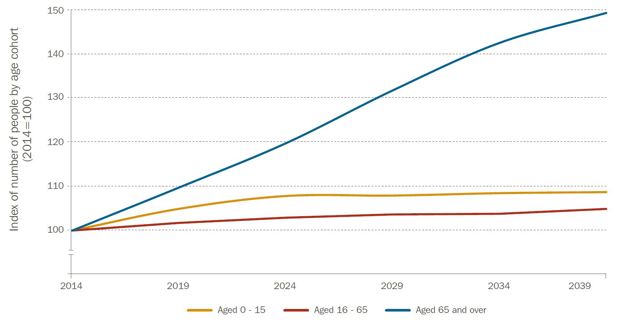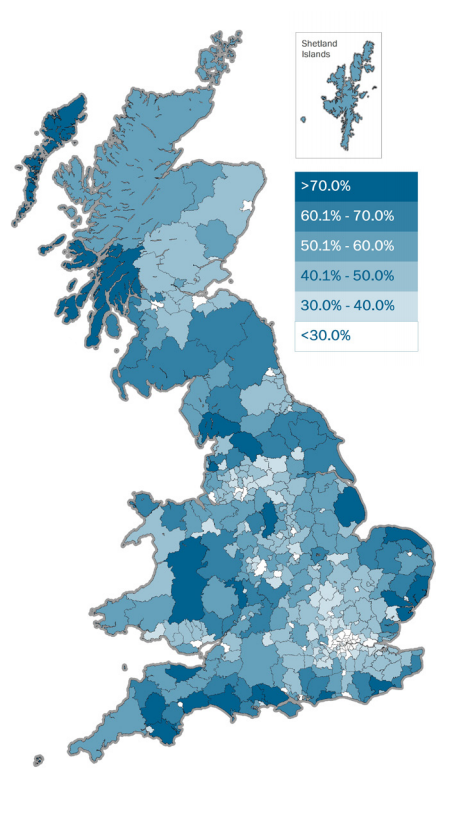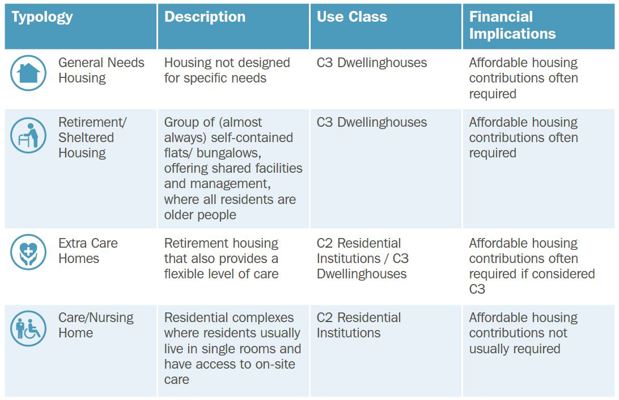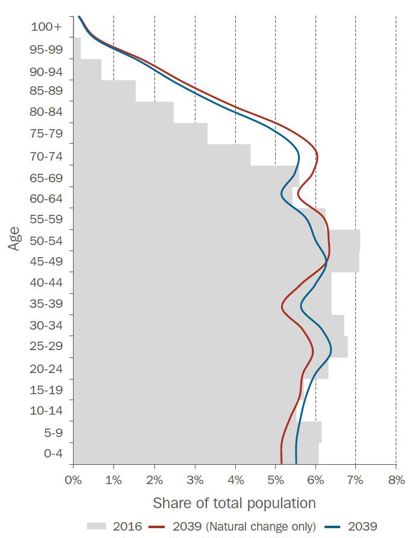Increasing life expectancy is one of society’s great success stories. It is quite relieving to know that on average we should be able to live significantly longer than any generation before us.
However, with longer life expectancy and low birth rates come greater responsibilities or – rather deterministically – an ageing population. In fact, in line with what is increasingly recognised[1] as a global demographic trend, the UK population is ageing and this poses challenges and opportunities for central and local governments.
Our latest Research Note, The Implications of Britain’s Ageing Population, covers some of the demographic shifts that are expected to take place in the next 20 to 25 years, including:
Population projections by age cohort
The number of people aged 65 and over is set to increase at a much faster rate than any other age cohort.

Source: ONS, NLP analysis
The ONS expects England’s age profile to change significantly in the future, with more people over 60 and fewer between the ages of 20 and 50 as a share of total population. A country’s age profile is the foundation upon which public finances are designed – changes to the foundation will have impacts on the wider public finances’ structure. Interestingly, net international migration is expected to marginally alleviate this shift.
Source: ONS, NLP analysis
Dependency ratio by local authority
Dependency ratios (the number of people aged over 65 as a share of the working age population, i.e. people between the ages of 16 and 64) show a clear pattern across Great Britain: cities will retain a relatively younger workforce while coastal locations, and some rural ones, will see the share of older people rocket relative to the local population. In absolute terms (not shown on the map), there will be more older people in cities and non-coastal locations, but the latter will be the ones where this demographic is projected to make up a larger share of the resident population.

Source: ONS, NRS, Statistics for Wales, NLP analysis
Local authorities’ expenditure
Covering the costs associated with an ageing population will prove to be a financial and political challenge for local authorities at a time when they will be facing important changes to their finances. Over time, councils will see a reduction in grant funding from central government, become able to raise council tax by 2% each year (on top of the 1.99% already allowed without the need to hold a referendum) and are set to retain all business rates. The ability to collect (and retain) taxes is an opportunity that goes hand in hand with the political challenges associated with raising them.

Source: DCLG, NLP analysis
Planning for housing an ageing population
The majority of people may prefer to remain in their family home as they age, but few understand the limitations that most of the current housing stock is subject to. Only around 7% (1.7 million) of dwellings is fully accessible by DCLG definitions, 72% (21.7 million) could be adapted, while 28% (6 million) could not
[3].
To reflect the growing concern of finding a solution to housing an ageing population, we have also looked at some of the planning issues and put together a summary that highlights the implications of the differences between the various housing typologies for older people.

Source: NLP analysis
All of the issues outlined above, and more, are discussed in more detail in our
Research Note and as part of our
Ageing Population blog series.
[1] The last time so many national and international organisations reached such vocal and unanimous agreement upon a topic in the trending hashtags on Twitter was with #TakeBackControl and #StrongerIn, but, the author of this blog being Italian, let’s not go into that.
[2] Not so pyramid-shaped going forward, but population hut didn’t quite get the message across.
[3] English Housing Survey, 2014 to 2015.








